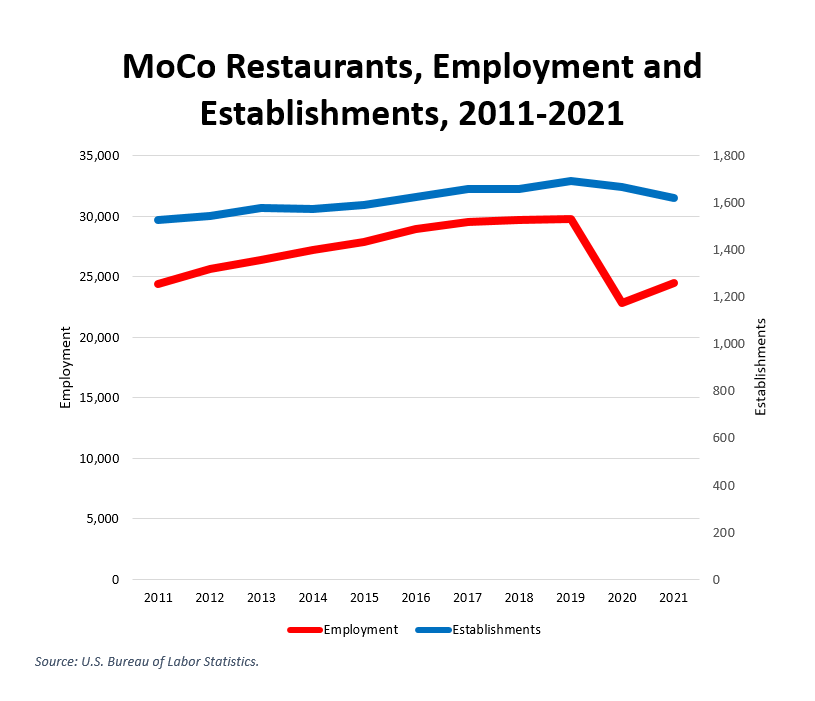By Adam Pagnucco.
MoCo’s restaurant community has long had an up-and-down relationship with the county government. On the one hand, restaurant owners and managers frequently complain about issues like parking, permitting and inspections. That’s not unusual, but the county’s wholesale liquor monopoly – the only government system in the region controlling spirits, wine and beer – has attracted the ire of restaurants and package stores for decades. On the other hand, county residents are an attractive customer base for restaurants – too attractive for many to pass up – and the county benefits immensely from having a full range of restaurant choices. It’s a sometimes rocky marriage that has nevertheless persisted because the spouses need each other.
Then came the pandemic. Montgomery County and many other jurisdictions around the world introduced numerous restrictions on restaurants to slow the spread of COVID. Restaurant owners acknowledged the need to impede the virus, but some of them alleged that Montgomery County’s policies were unduly restrictive when compared to other jurisdictions in the region. Some of them even sued the county to stop a batch of restrictions but agreed to dismiss the lawsuit when they were lifted. The pandemic has since eased but bad blood persisted, resulting in restaurant support for county executive challenger David Blair. (Disclosure: I worked for Blair in the primary election.)
What should we make of the restaurants’ allegations that the county was unnecessarily harsh on them, resulting in disproportionate economic damage and closures? This series attempts to evaluate whether they were right. It’s hard to get recent economic data at the level of county and industry, but one source that comes close is the U.S. Bureau of Labor Statistics (BLS). BLS publishes annual employment, establishment count and wages paid at the county level for many industries, one of which is NAICS Code 7225 (Restaurants and Other Eating Places). For Montgomery County and many other regional jurisdictions, such data on restaurants is currently available through the end of 2021. That doesn’t bring us to today but it does cover the worst years of the pandemic.
In analyzing this data, it’s useful to recall the timeline of what happened. 2019 was the year before the pandemic and serves as our base year. The pandemic began to affect the U.S. in March of 2020. For most of that year, the economy – and especially the restaurant sector – was in dire condition as vaccines were not yet available. 2021 was a rebound year as the population steadily vaccinated itself – especially in Montgomery County – and restrictions began to ease. But by the end of 2021, the restaurant sector had not yet fully recovered.
Montgomery County’s experience reflected the trends experienced nationwide. The chart below is a dual-axis chart showing employment (in red on left axis) and number of restaurant establishments (in blue on right axis) from 2011 through 2021. From 2011 through 2019, both employment and establishment count rose steadily as the county recovered from the Great Recession. But in 2020 – BAM! – employment fell sharply and rebounded partially the next year while establishment count fell in both years. This reflects real damage to MoCo restaurants, but let’s remember that restaurants everywhere suffered during the pandemic.

Did MoCo restaurants suffer more than their peers in the rest of the region? We will start examining that question in Part Two.
